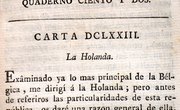Every day, children easily use inflectional endings in their own conversations. However, making them aware of what these endings are and how they're applied is a greater challenge. Guiding students to recognize ending patterns, incorporating fun activities into your lessons and engaging students in direct application of concepts will help the principles of inflectional endings become as second nature as using them.
Then and Now
Ask students about the many things they did differently when they were babies. As they name what they did at that age, make a list on one side of the board of the “-ed” verbs named, such as “crawled,” “drooled” and so on. Ask students next about the things they do today and group those verbs on the other side of the board. Point out the “-ed” ending that's common among the past-tense words and absent among the present. Look for an example of the same verb in both columns to highlight the difference in tense most visibly.
Identifying Roots
Give students a worksheet listing a number of verbs and nouns with various inflectional endings. Have them identify and write the root of each word on the worksheet, then instruct them to underline the ending on the original word. Reserve this activity on a separate worksheet to test students’ comprehension. List root words followed by a short sentence in which to place them, and have students add the necessary endings to make each word fit.
Mad Lib
Find a Mad Lib that's especially verb-oriented or create your own by making up a simple story and leaving out occasional words to be filled in by the class. Name the missing parts of speech and have students come up with their own answers. Focus on leaving many spaces for verbs and nouns, singular and plural as well as past and present tense. Fill in the verbs and nouns exactly as told to you; don’t conjugate or pluralize them to fit the story. Read the completed story aloud and pause after each verb. Ask whether it fits in the story as is or if it needs to be changed to make sense, and discuss the alterations in inflectional endings with the class.
Root Endings
Pass out a list of plural nouns and regular present tense verbs, interspersing those with “-s” and “-es” inflectional endings. Ask students to identify several of those with “-es” endings followed by those with “-s” endings. Write their examples on the board in separate columns until there are at least two words for every “-es” root ending: "ch," "sh," "ss," "x" and "z." Circle each ending one by one, then suggest a new word with a similar ending and guide students to use the same method -- adding “es” -- to make it plural. Have them recount the root endings that demand “es” after going through all examples.
Related Articles
References
Writer Bio
Alyssa Brode began writing in 2001. She served as a staff writer for her high school newspaper, "The Arrowhead," and has been freelancing ever since. She has a Bachelor of Music degree from Westminster Choir College of Rider University with a double major in voice performance and computer information systems and is pursuing a Master of Music in opera performance.











